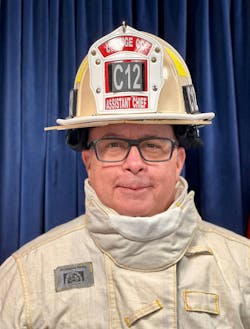Historically, trauma care has relied on patients being transported quickly off the scene to medical facilities for treatment and flooded as quickly as possible with normal saline to maintain their volume. Administering fresh whole blood on scene or during transport is a more effective approach.
The ‘Narcan of trauma’
Trauma is the leading cause of death among individuals who are younger than 46 years of age, with hemorrhage being the most preventable cause of death, according to the National Library of Medicine. Recognizing this, the Orange County, FL, Fire Rescue Department (OCFRD) launched its Pre-Hospital Whole Blood Program in March 2024.
OCFRD’s EMS is extensive, with 56 ALS transport units that cover 1,000 square miles. The Pre-Hospital Whole Blood Program allows specially trained captain paramedics (certified locally) to transfuse whole blood directly to patients on scene or while transporting.
In just nine months, the OCFRD transfused 93 units of whole blood to 72 patients, which helped 50 patients walk out of the hospital and return to their life.
The OCFRD’s nine months of data show, on average, an increase in systolic blood pressure of 22 mmHg and a reduction of the shock index by 0.22. Captain paramedics report that they watched the color return to patients and that patients were more awake and alert after receiving prehospital whole blood. One captain referred to this program as the “Narcan of trauma” after seeing a patient wake up instantly after a transfusion, something that wasn’t seen before.
Refining existing models
Early notification is crucial to the success of the program. Dispatchers are trained to assess the need for blood as soon as a 9-1-1 call is received. This ensures that whole blood transfusionists are directed to the scene promptly. Furthermore, responding crews are trained to request that the resources of whole blood be dispatched while they are en route if they believe that the potential of the call warrants the need.
Although the OCFRD didn’t create the concept of prehospital blood transfusions, the department adapted and refined existing models to fit specific needs. The whole blood program follows an intercept model that’s similar to those that were developed in collaboration with other departments. If the responding transfusionist doesn’t make it to the scene before transport begins, that individual can intercept the transport unit before it arrives at the trauma center.
The equipment
Whole blood is transported on apparatus in Peli BioThermal Credo ProMed coolers. The coolers are specialized for medical use.
The LifeFlow PLUS blood administration set allows transfusionists to give a unit of blood in three minutes.
The QinFlow Warrior Lite warms blood to just above body temperature and adjusts flow rate automatically.
All of this equipment is carried in a “blood deployment bag,” which also includes everything that’s needed to manage a serious trauma patient.
Partnership & collaboration
Community partnerships have enabled the seamless integration of prehospital care and trauma services. Instead of discarding blood after its “shelf life,” the program rotates blood supplies through exchanges with Orlando’s Level 1 Trauma Center. This ensures that blood products remain viable and available for surgeries and elective procedures.
Through collaboration with neighboring jurisdictions, the OCFRD shares its best practices with departments and supports them through mutual aid and their interest in adopting similar initiatives.
A standard for the future
Less than 1 percent of U.S. agencies have adopted a prehospital whole blood program. The OCFRD is the first department in central Florida to implement such an initiative. Imagine the number of lives that such a program can save as it’s implemented across the country.
This might be an innovative program today, but this will be the standard of care in the future. By working together and sharing knowledge, we can improve outcomes for patients across the nation.
About the Author

Scott Egan
Scott T. Egan is a 32-year veteran of the fire service who currently serves as assistant chief of operations EMS for the Orange County, FL, Fire Rescue Department, which is an ISO Class 1 and CFAI-accredited department. Egan is a certified EMT-P and has a bachelor’s degree in business administration. He serves as the vice chairman of the Orange County EMS Advisory Council. Previously, Egan served as the chairman of the Orange County EMS Operations Committee and was a special operations technician and instructor at the Central Florida Fire Academy.
